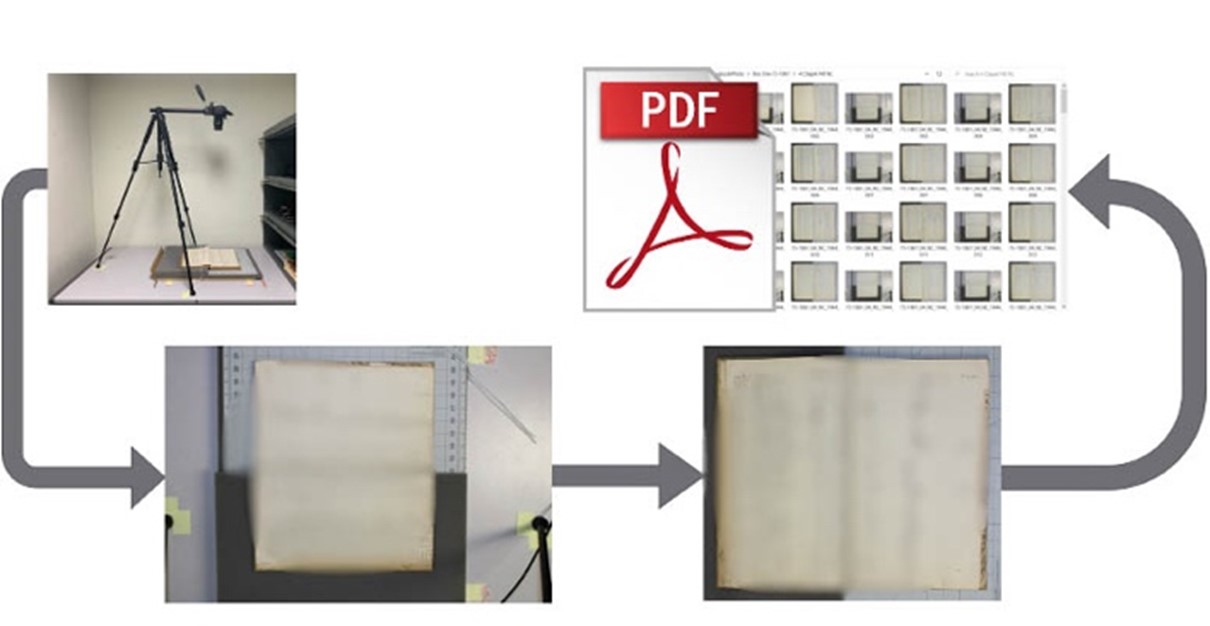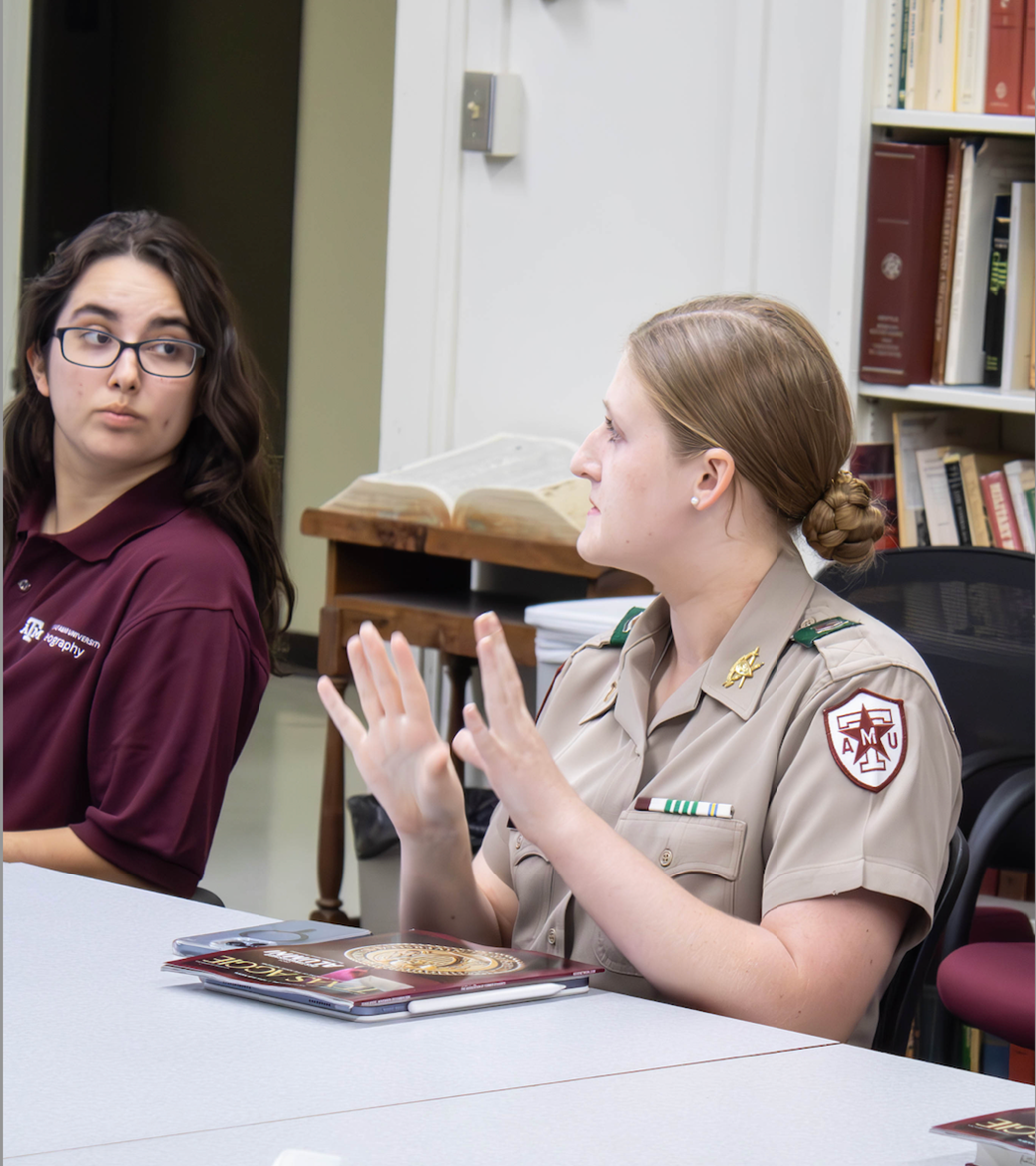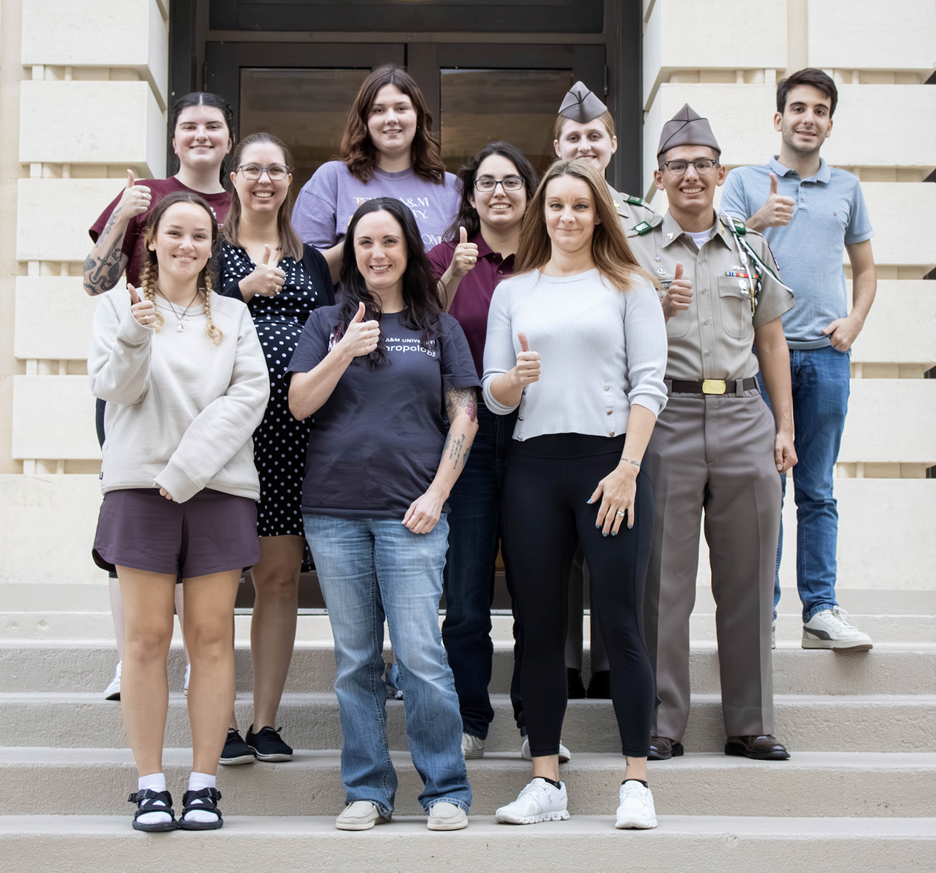Defense POW/MIA Accounting Agency Partner Projects
Through Texas A&M University’s partnership with the Defense POW/MIA Accounting Agency (DPAA), the Chest Radiograph Project is digitizing one-of-a-kind medical logbooks that may assist with the identification of unaccounted for service personnel and the History Research Internship is conducting archival research on Texans still missing in action. The DPAA is an agency tasked by Congress to provide the fullest possible accounting of missing American service personnel from World War II through present conflicts. Since 2021, 65 TAMU students have participated in a partner project.
In the 1940s and 1950s at enlistment stations across the nation, service personnel were screened for tuberculosis and their x-ray numbers were recorded in medical logbooks. Because each person’s clavicle is unique, the DPAA forensic laboratories began to use chest radiographs (or x-rays) to help with identifications of those still missing in action by comparing x-rays of their clavicles to recovered skeletal remains. Since January 2022, students at Texas A&M University have participated in the Chest Radiograph Project digitizing the only copies that still exist of these medical logbooks. Students receive training in archival methods, learn how to use the digitization equipment, and familiarize themselves with the DPAA’s accounting mission. Using flatbed scanners and DSLR cameras, this project methodically preserves the deteriorating logbooks from World War II and the Korean War.

Instead of scientists having to connect x-rays to individuals on a case-by-case basis by looking through thousands of logbook pages for their name and service number, students are facilitating the creation of a searchable database through digitization and then transcription that will provide DPAA scientists with key information from the logbooks. The science and the technology behind the clavicle matching program mean that the digitization of these logbooks has the potential to facilitate identifications where DNA or forensic odontology may not be possible.
Meanwhile, students participating in the History Research Internship are conducting research on Texans unaccounted for from World War II, the Korean War, and the Vietnam War. Under the supervision of the TAMU DPAA Research Partner Fellow, they have combed through online databases and university archives to locate photographs of unaccounted for Texans from World War II and the Korean War; these photographs are then included in the service personnel’s profile on the DPAA website. The interns have also conducted extensive archival research on Aggie MIAs and POWs, producing short biographies, writing an award-winning undergraduate research thesis, and ensuring their sacrifice is never forgotten. Some of this research on Aggies was highlighted in a recent video produced by Texas A&M University:
If you are interested in serving as a History Research Intern or working on the Chest Radiograph Project, please contact the Texas A&M University DPAA Research Partner Fellow.


